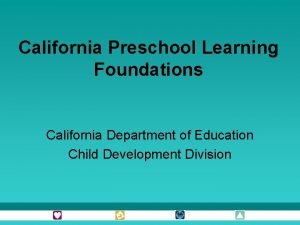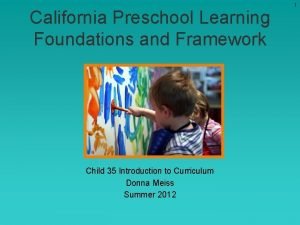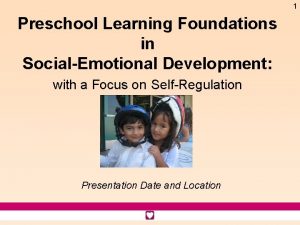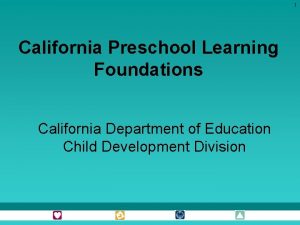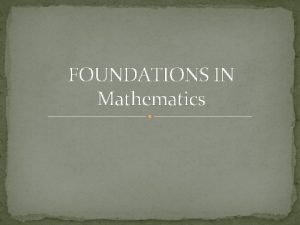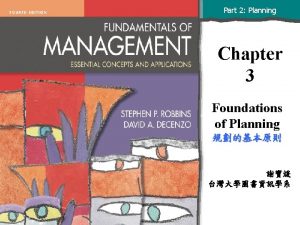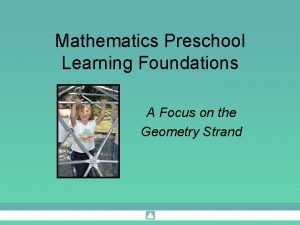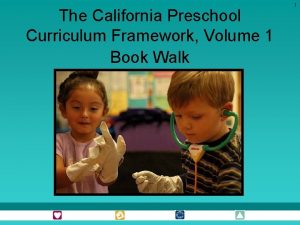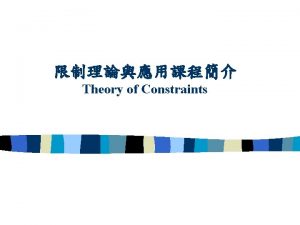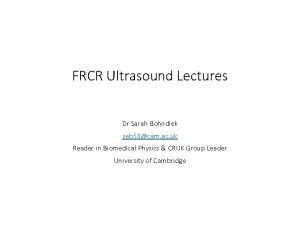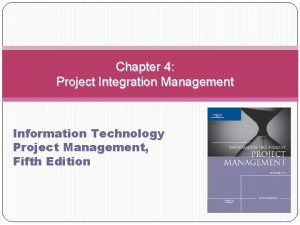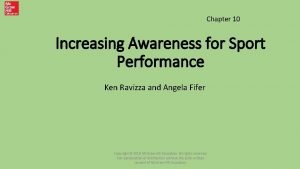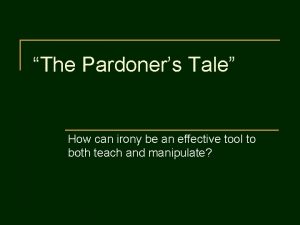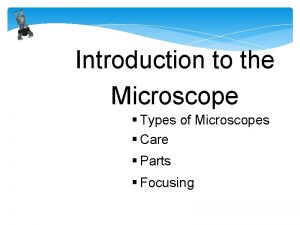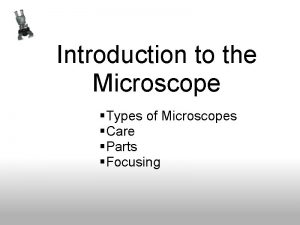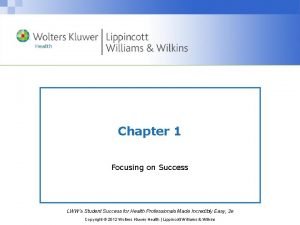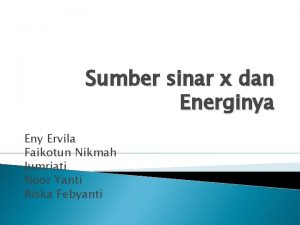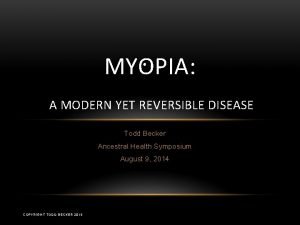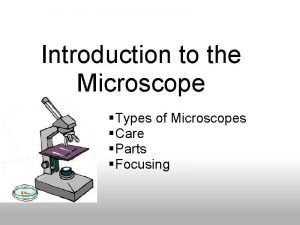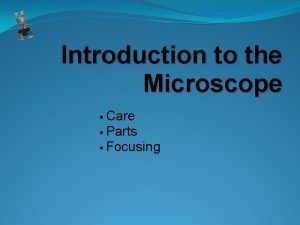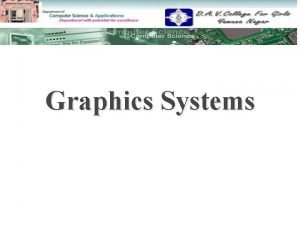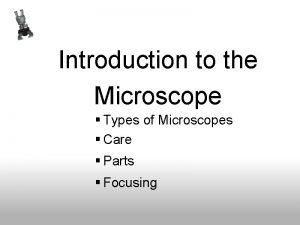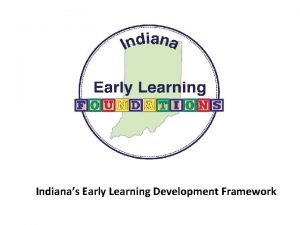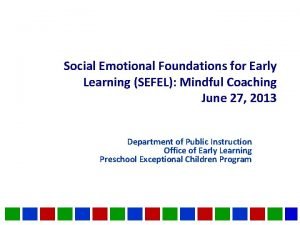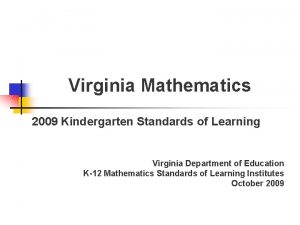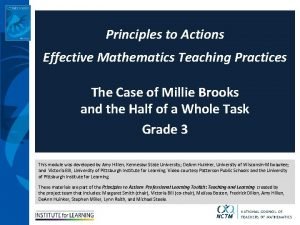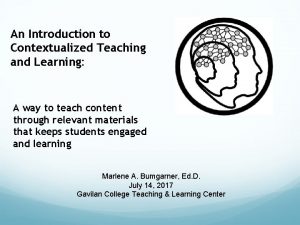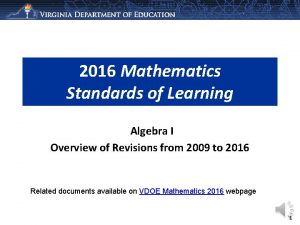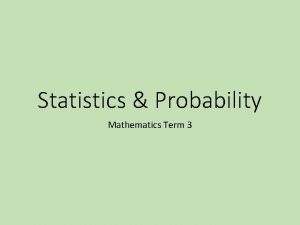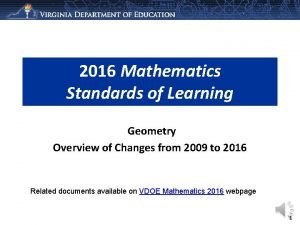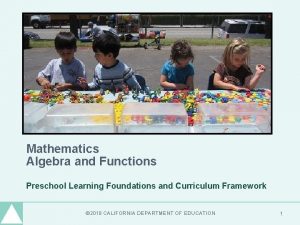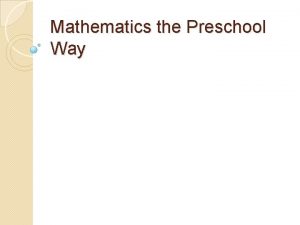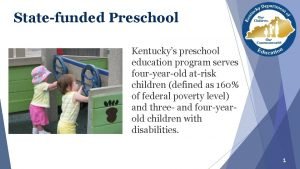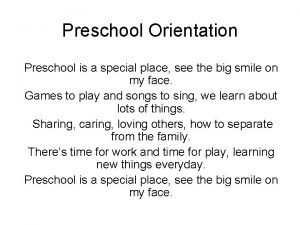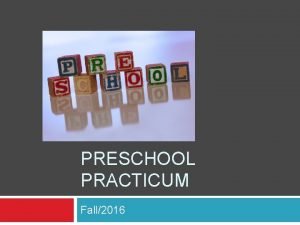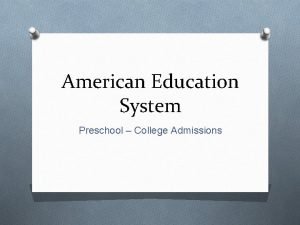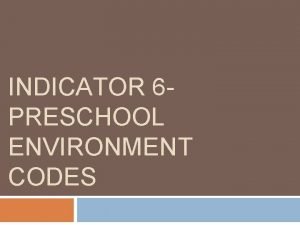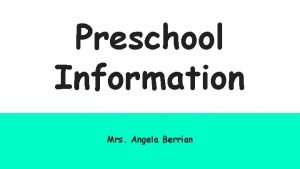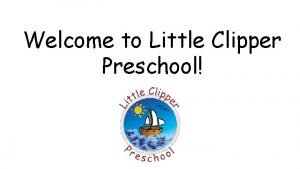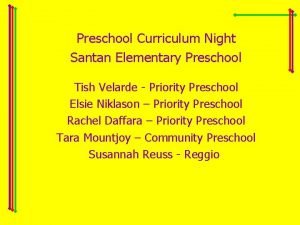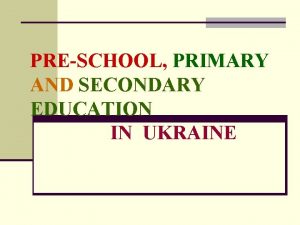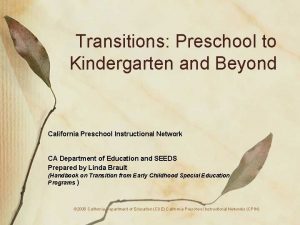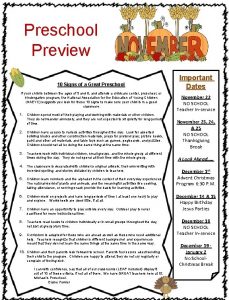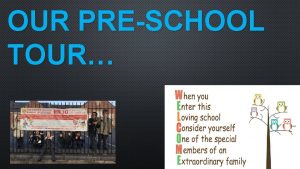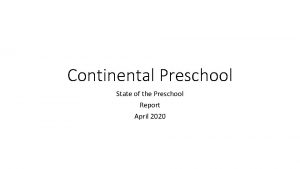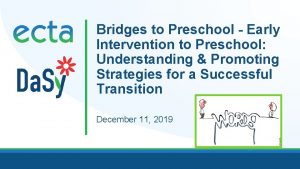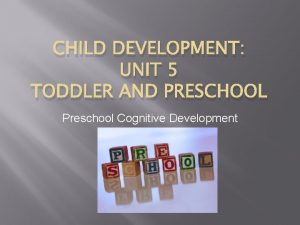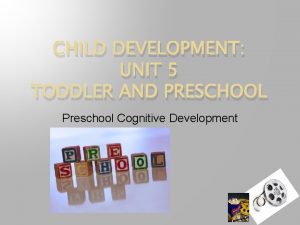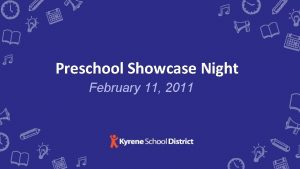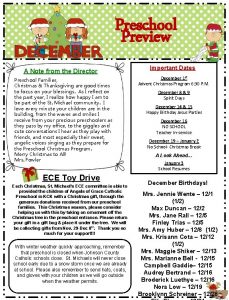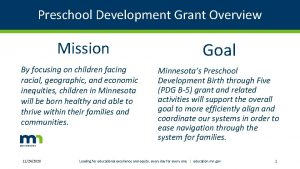FOUNDATIONS IN Mathematics The preschool learning foundations focusing







































- Slides: 39

FOUNDATIONS IN Mathematics

� The preschool learning foundations focusing on the child’s readiness for school in the domain of mathematics � The preschool learning foundations represent goals to be reached by the time a three-year-old is just turning four and a four-year-old is just turning five. � These preschool learning foundations are designed with the assumption that children’s learning takes place in everyday environments: through interactions, relationships, activities, and play that are part of a beneficial preschool experience. �

Learning Math Through Play Children learn math through everyday experiences. National standards in mathematics describe what children should learn in preschool. The key components of math include:

Number Concepts: �Rote counting - memorization of sequence of numbers (songs, fingerplays) �One-to-one correspondence – counting one number for one object and seeing a numeral and associating with objects. �Recognitions numbers – number symbols






Patterns and Relationships �Regular arrangements of objects, shapes, or numbers �For preschoolers, the goal is to recognize and analyze simple patterns, copy them, create them, and make predictions about them by extending them.




Geometry �learning about shapes and characteristics of shapes.









Measurement �Children learn measurement from opportunities to use material and participate in hands-on activities �Children learn concepts – longer, shorter, heavier, lighter, faster, and slower

Children Use : �Standard measures – rulers, scales, measuring cup and spoon, scales, thermometers. �Non-standard measures – using hands, feet, string, bears, etc.





Classification, Sorting and Matching: Group or separate things into categories.






Ordering (seriation): Ordering things in a sequence that leads gradually from the smallest to the biggest.



Graphing �Is a direct extension of sorting and classifying �As a visual representation of data, it helps children see relationships �Graphing is a way for children to display many different kinds of information in different forms.

 California preschool foundations
California preschool foundations Preschool learning foundations volume 1
Preschool learning foundations volume 1 Preschool learning foundations volume 3
Preschool learning foundations volume 3 Preschool learning foundations social emotional
Preschool learning foundations social emotional Preschool learning foundations
Preschool learning foundations Preschool learning foundations math
Preschool learning foundations math Preschool learning foundations
Preschool learning foundations Preschool learning foundations math
Preschool learning foundations math California preschool curriculum framework
California preschool curriculum framework Cuadro comparativo entre e-learning b-learning y m-learning
Cuadro comparativo entre e-learning b-learning y m-learning Five focusing steps
Five focusing steps Project integration management example
Project integration management example Isoelectric focusing
Isoelectric focusing Ultrasound
Ultrasound Focusing on broad organizational needs
Focusing on broad organizational needs Awareness requires totally focusing attention on the task.
Awareness requires totally focusing attention on the task. A pardoner is an official of the
A pardoner is an official of the Types of microscopes
Types of microscopes Different types of microscope and their uses
Different types of microscope and their uses Lwws
Lwws Fungsi dari metalic focusing cup adalah
Fungsi dari metalic focusing cup adalah Acta ophthalmologica
Acta ophthalmologica When focusing a specimen, you should always start with the
When focusing a specimen, you should always start with the Part of the microscope
Part of the microscope Primary output device in a graphics system
Primary output device in a graphics system What are 4 types of microscopes?
What are 4 types of microscopes? Indiana learning foundations
Indiana learning foundations Social and emotional foundations for early learning
Social and emotional foundations for early learning 2009 mathematics standards of learning answers
2009 mathematics standards of learning answers Establish mathematics goals to focus learning
Establish mathematics goals to focus learning What is contextualized teaching and learning
What is contextualized teaching and learning Algebra 1 sol 2016
Algebra 1 sol 2016 Learning intentions and success criteria for mathematics
Learning intentions and success criteria for mathematics 2016 mathematics standards of learning
2016 mathematics standards of learning Hát kết hợp bộ gõ cơ thể
Hát kết hợp bộ gõ cơ thể Slidetodoc
Slidetodoc Bổ thể
Bổ thể Tỉ lệ cơ thể trẻ em
Tỉ lệ cơ thể trẻ em Gấu đi như thế nào
Gấu đi như thế nào Tư thế worm breton là gì
Tư thế worm breton là gì
